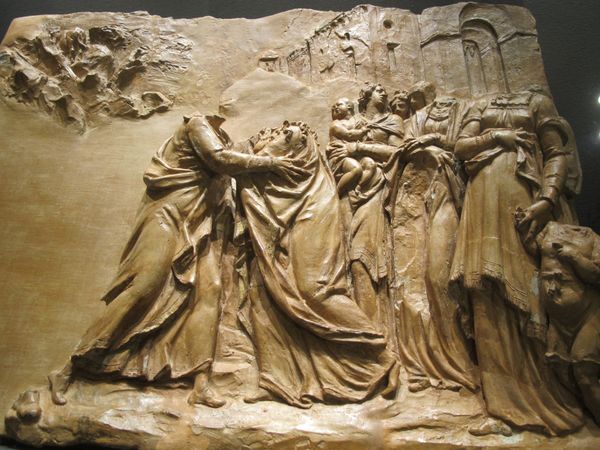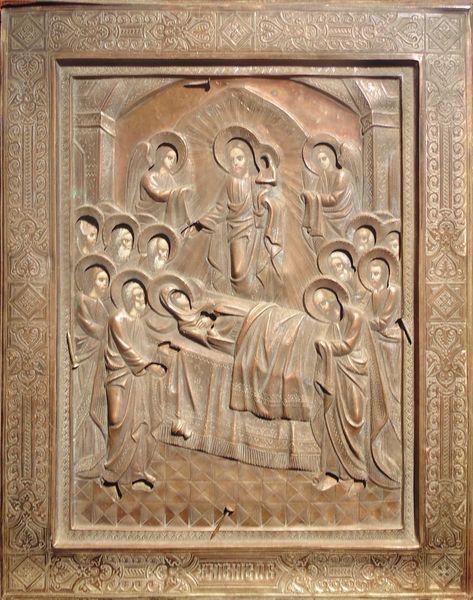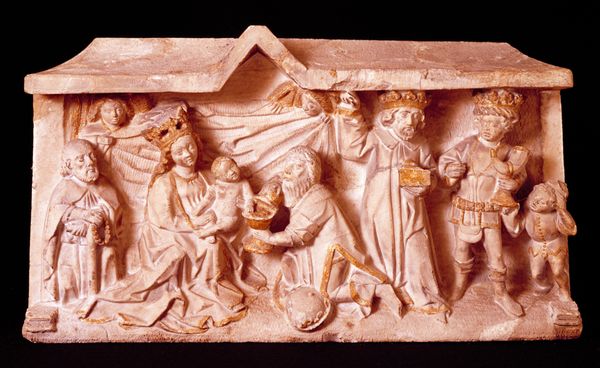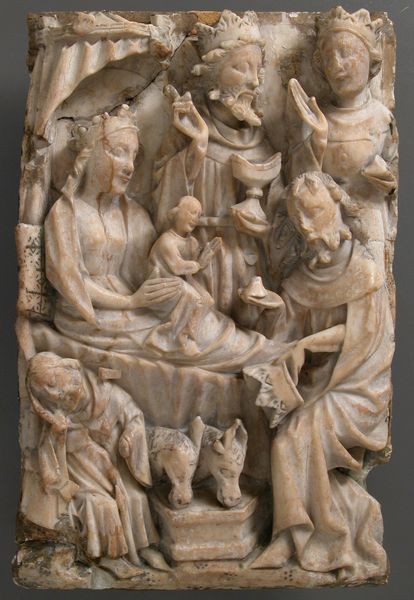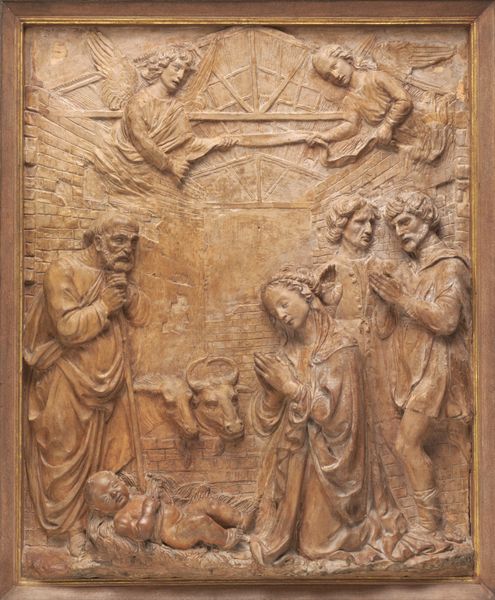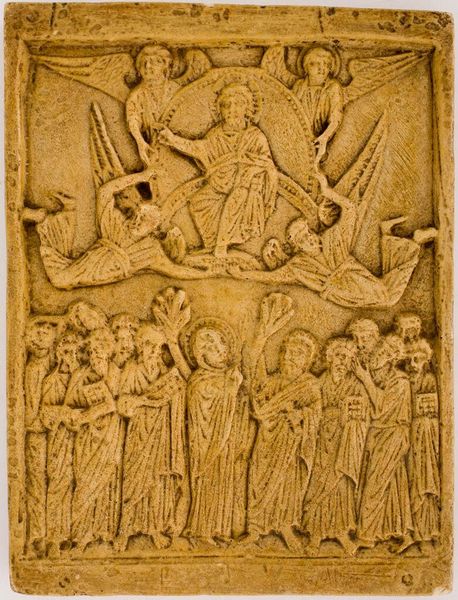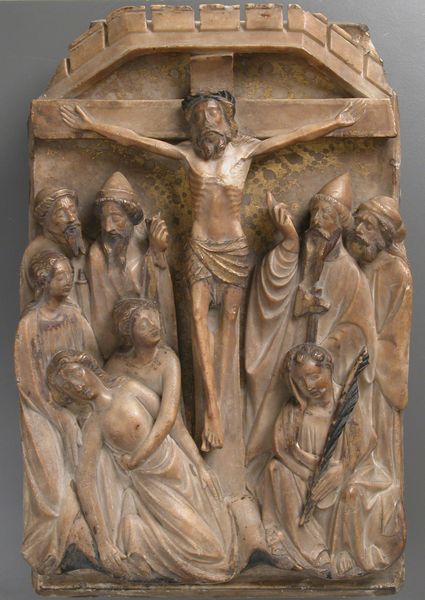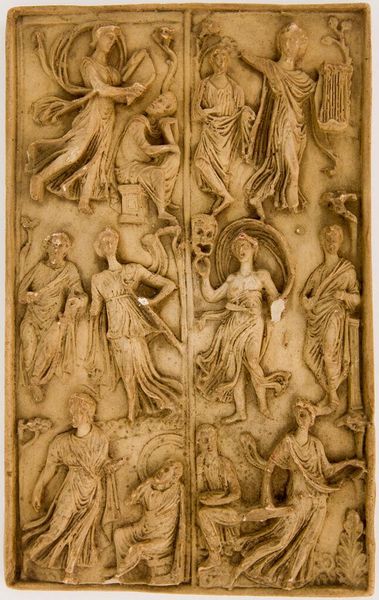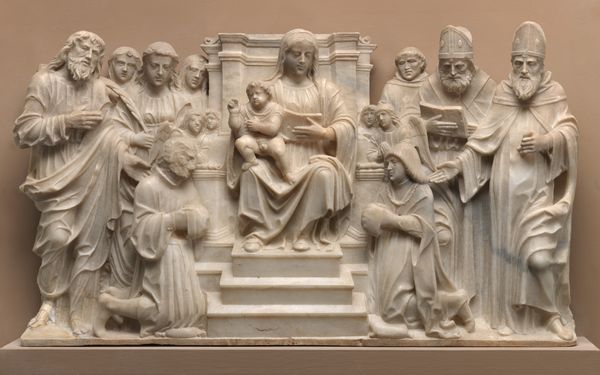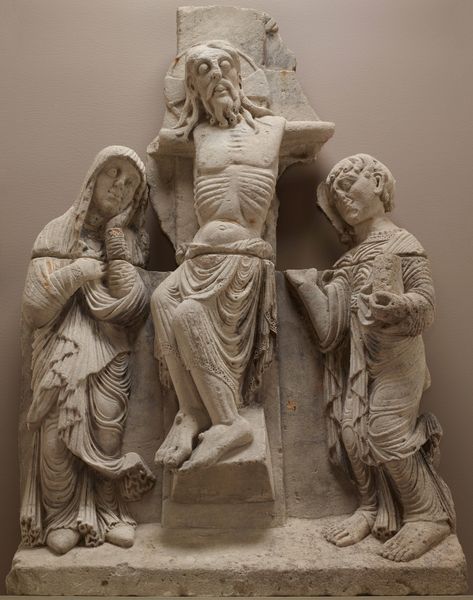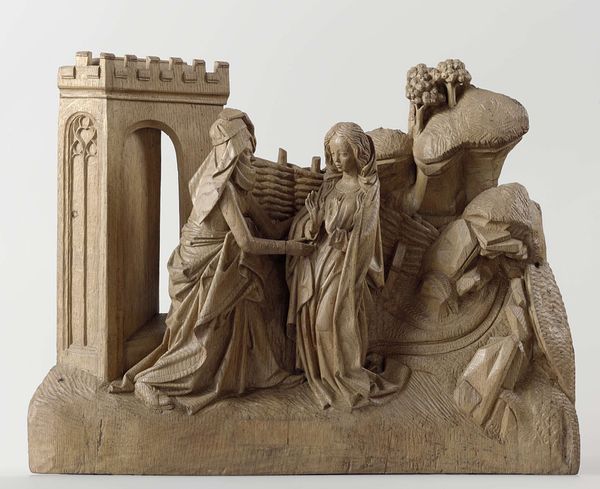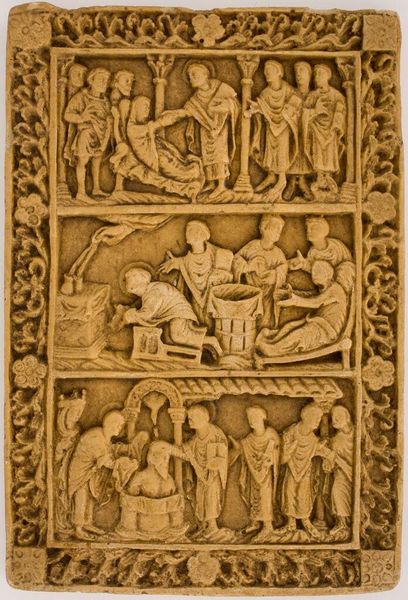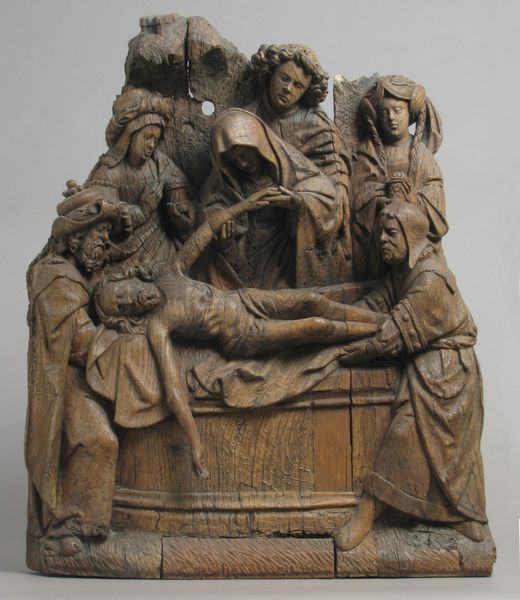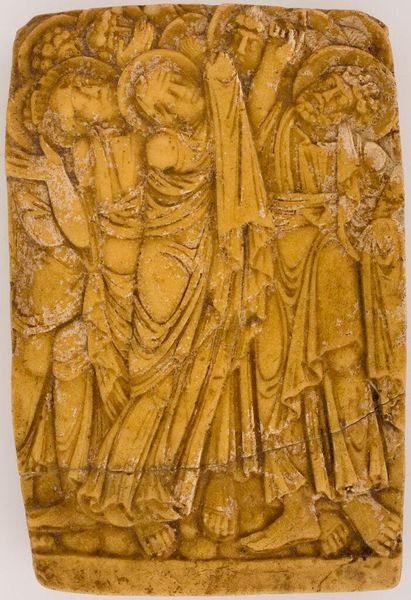
carving, tempera, relief, sculpture
#
medieval
#
carving
#
tempera
#
sculpture
#
relief
#
figuration
#
sculpture
#
history-painting
#
academic-art
Copyright: Public domain
Editor: So this is “Cacciata Di Gioacchino Da Tempio”, which I understand to be by Giambologna. It’s a relief, looks like maybe tempera on sculpture, or perhaps a carving, and it's giving me a sense of... historical drama. What do you see in this piece? Curator: It's a fascinating work, isn't it? To me, it's a powerful depiction of exclusion and social stigma. Look at how Joachim is being driven out of the temple. The composition centers on his rejection, but also invites us to consider the patriarchal structures that determined who was worthy and who wasn't. What kind of power dynamics do you observe at play here? Editor: I guess I hadn't really thought of it that way. It seems very much like a standard history painting, focusing on the narrative. I can see how the group rejecting him, with their gestures and positioning, puts him in an isolated, vulnerable spot. Curator: Precisely. And consider the context: Joachim and Anna were childless, a significant social and religious burden in their time. Infertility, primarily seen as the woman’s issue, carried profound consequences for identity and status. Does seeing it framed that way make you rethink its message? Editor: Definitely. It makes me think about the broader societal pressures and judgements imposed, especially on women, in that period. It's like the personal tragedy becomes a public spectacle, reinforced by these imposing architectural structures. Curator: Exactly. And isn’t it striking how even within a religious context, social norms and biases find their way into supposedly sacred spaces? Perhaps, it even allows us to consider and confront those dynamics still present in our contemporary society. Editor: That’s a really helpful way of understanding it. I was so caught up in the literal depiction that I missed the underlying commentary on social exclusion. Curator: Art offers so many avenues for reflection when we view it through different lenses. Editor: I agree. I'll definitely look at historical works differently from now on. Thanks for sharing that.
Comments
No comments
Be the first to comment and join the conversation on the ultimate creative platform.
